Anthrax, a Rare but Deadly Disease

Anthrax is a disease that originates from animals (zoonosis) which is caused by the bacteria Bacillus Anthracis and requires serious attention in its treatment. In Indonesia itself, there have been several cases of anthrax caused by a lack of public knowledge about this disease. People who frequently interact with livestock such as cows or buffalo and their derivative products are at great risk of contracting the anthrax bacteria, although it does not rule out the possibility that wild animals can also carry these bacteria and transmit it to humans.
Although cases of anthrax are rare, this disease is a serious disease that can result in death. Therefore, it is quite important to increase public knowledge about the dangers of anthrax so that it can provide early detection of the spread of this disease.
According to one of the teaching staff at the Faculty of Medicine (FK) Universitas Sebelas Maret (UNS), Dr. Dhani Redhono Harioputro, dr., Sp.PD., KPTI, this anthrax bacteria can only be transmitted from animals to humans and until now there have been no cases of transmission between humans.
 |
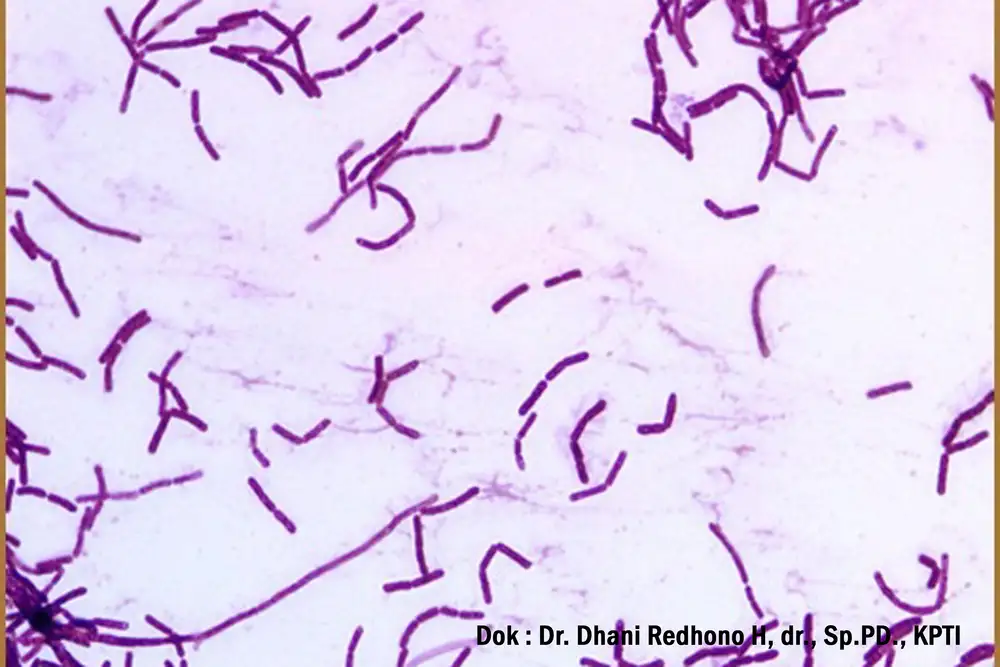 |
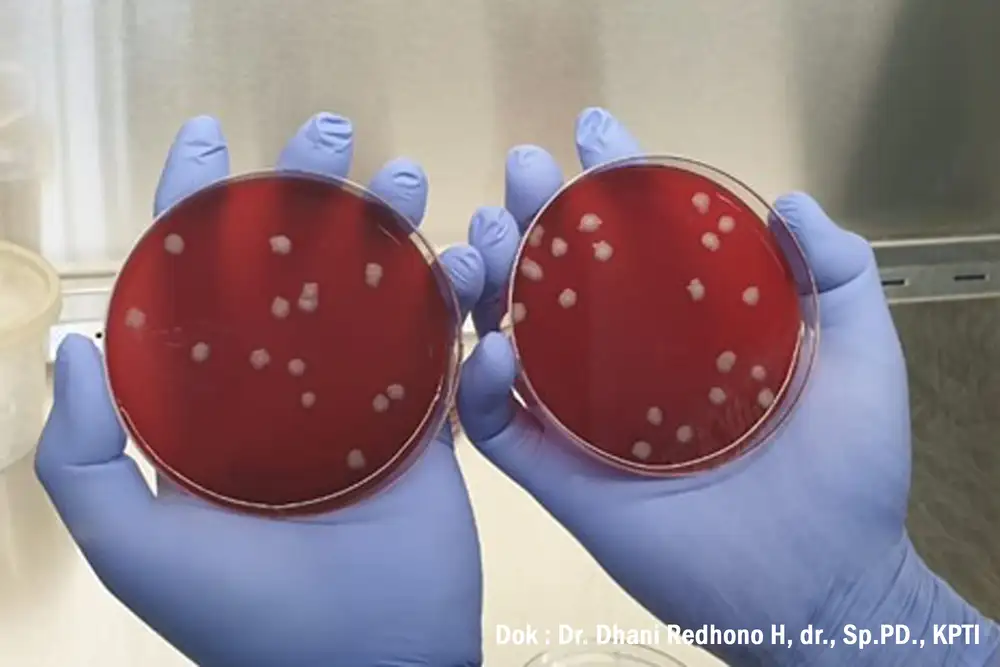 |
(Swipe for the next photos)
"What's special about anthrax is that it only goes one way so it can't be reversed from animals to humans and what happens most often in Indonesia is because people eat the meat of animals infected with anthrax," he explained.
Dr. Dhani explained further that this anthrax bacterium is very unique because after it enters the body it can change from bacteria to spore form and the process of entering the anthrax spores can be done in several ways.
“This infection can be through the skin or cutaneous anthrax, through the respiratory tract or inhaled anthrax and through the digestive tract or gastrointestinal anthrax. Therefore, it is important to cook the meat until it is completely cooked because this anthrax will die at a temperature of 100 degrees Celsius for more than 15 minutes," he said.
The largest process of anthrax infection is through the skin or cutaneous anthrax which accounts for almost 95% of cases that occur. "There are several symptoms experienced by anthrax sufferers who are infected through the skin, starting with feeling itchy and painful on the skin, then a reddish, spotty color appears on the skin, then the skin will open and turn into a black eschar accompanied by edema or swelling. There must be these two, eschar and edema, for us to suspect that it is skin anthrax," Dr. Dhani explained.
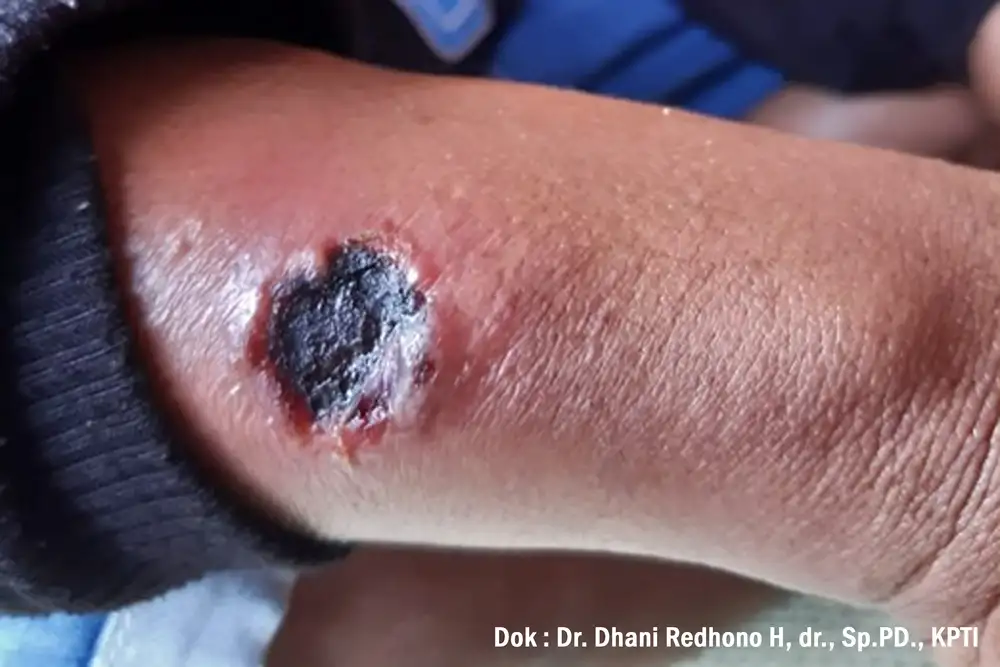 |
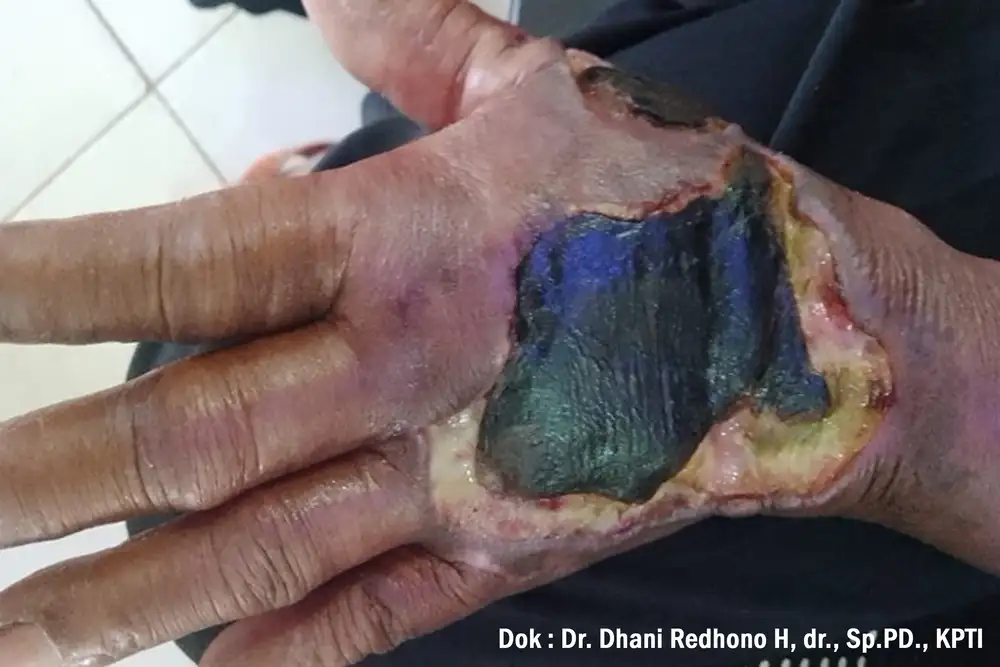 |
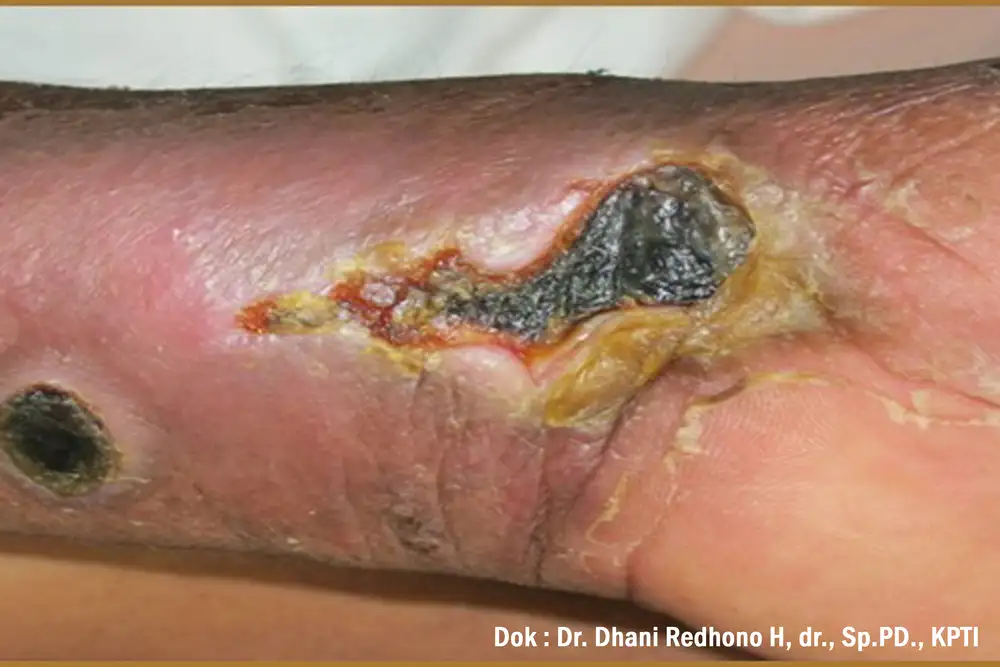 |
(Swipe for the next photos)
"The symptoms of inhalation anthrax are the same as in cases of pneumonia, the difference is that inhalation anthrax has a very fast progression. It could be that in less than 4 days after being infected, the patient will die," he continued.
Meanwhile, gastrointestinal anthrax infections are usually caused by consuming meat infected with anthrax. The symptoms are almost the same as cases of food poisoning, but the difference is that the progression is faster. Starting with nausea, vomiting blood and death, it only takes 4-5 days. The mortality rate in this case can reach 95-99% of infected patients will die.
Anthrax spores can survive in the soil for up to dozens of years, so special treatment is needed for animals that die from anthrax. "So, the procedure is, the animal carcass is buried at a minimum depth of 1.5 meters to 2 meters then plastered on top and marked with a mark if an anthrax-infected animal is buried underneath. This is important because anthrax spores can appear on the surface of the soil within 10 to 12 years, thereby preventing the land where the animal is buried from being dismantled," Dr. Dhani explained.
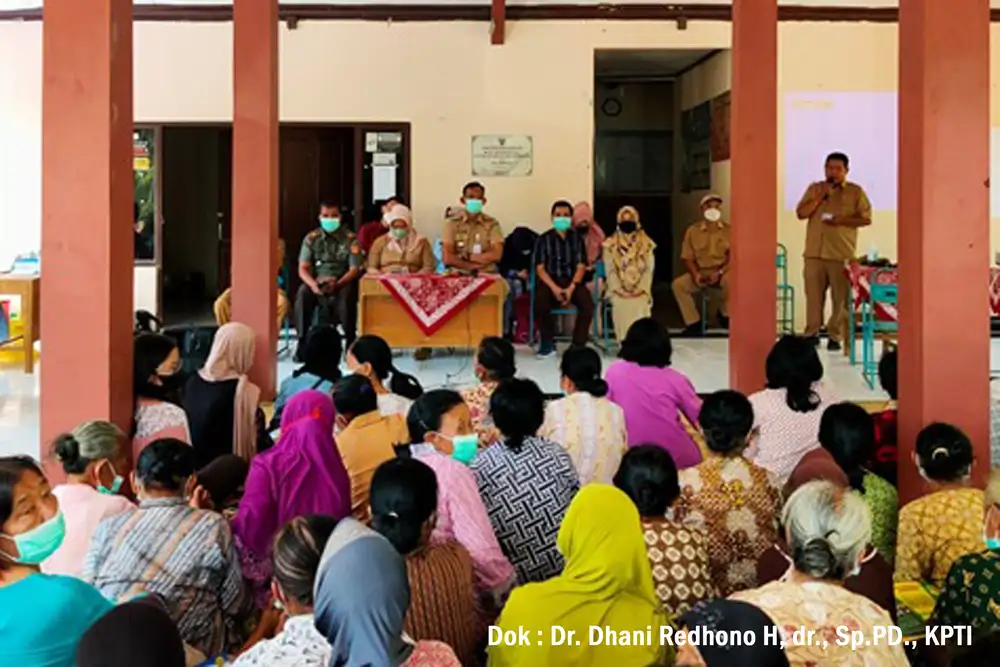 |
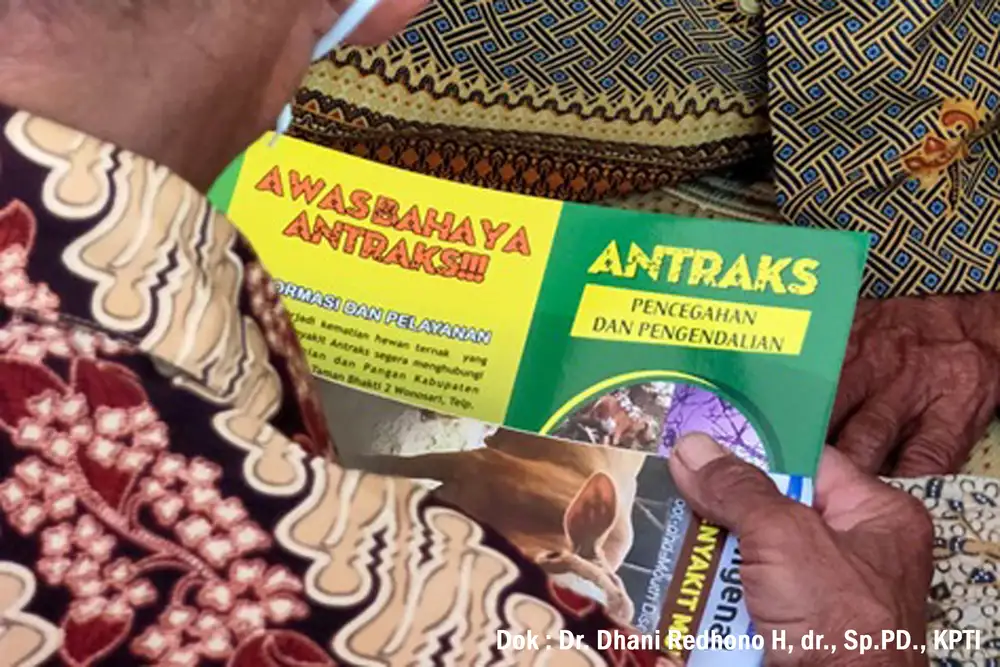 |
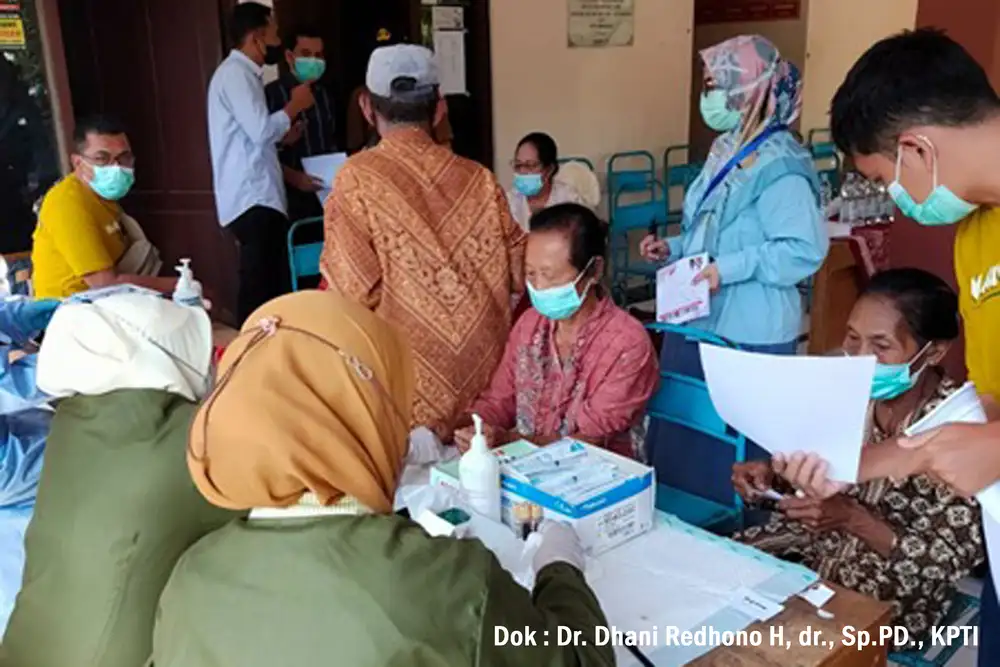 |
(Swipe for the next photos)
Prevention of the spread of this disease has been and continues to be carried out by cross-sectors, including the animal health sector, the human health sector and the agricultural and livestock sectors. It is hoped that strengthening coordination, collaboration and communication between the 3 sectors will be able to control the spread of this anthrax disease.
Public Relation of FK UNS
 bahasa indonesia
bahasa indonesia 



